All issues

Volume 30, Issue 3
Displaying 1-6 of 6 articles from this issue
- |<
- <
- 1
- >
- >|
-
[in Japanese], [in Japanese], [in Japanese]1993 Volume 30 Issue 3 Pages 169-170
Published: March 18, 1993
Released on J-STAGE: October 28, 2009
JOURNAL FREE ACCESSDownload PDF (232K) -
[in Japanese]1993 Volume 30 Issue 3 Pages 171-176
Published: March 18, 1993
Released on J-STAGE: October 28, 2009
JOURNAL FREE ACCESSDownload PDF (741K) -
[in Japanese], [in Japanese]1993 Volume 30 Issue 3 Pages 177-184
Published: March 18, 1993
Released on J-STAGE: October 28, 2009
JOURNAL FREE ACCESSDownload PDF (4142K) -
[in Japanese]1993 Volume 30 Issue 3 Pages 185-189
Published: March 18, 1993
Released on J-STAGE: October 28, 2009
JOURNAL FREE ACCESSDownload PDF (774K) -
Masaharu MAEDA, Hiroshi NAGASAWA, Yoshimi HIRAGA, Koji YORIZUMI, Norih ...1993 Volume 30 Issue 3 Pages 191-200
Published: March 18, 1993
Released on J-STAGE: October 28, 2009
JOURNAL FREE ACCESSAlthough bed rest has so far been taken as a therapeutic approach at the very day of onset of cerebral bleeding and cerebral infarction, diminution of muscular force, orthostatic hypotention and the like due to bed rest can be important factors in delaying patients' rehabilitation. Thus, examination was made of the timing at which patients' training should be made to prevent them from disuse syndromes as can as possible following the onset of cerebral bleeding and cerebral infarction. From after the day of onset, we tried sitting position-, standing position- and walking-trainings on all cases of cerebral apoplexy hospitalized since the day of onset. As a result, trunk muscular force could be kept to a significant extent compared with the control group and subsequent functional prognosis proved to be comparatively favorable. On the other hand, patients with unable to complain of their subjctive symptoms and with consciousness disturbance above 10 on Japan Coma Scale could not obey their trainers and were untrainable in terms of safety control.
No statistically significant difference in rate of recurrence of progress was noted from the group in bed rest for not less than several days following the onset.
Therefore, so far as the patient can complain subjectively and there is no grave consciousness disturbance over score 10 in Japan Coma Scale and severe complications, we urge patients of cerebral hemorrhage and infarction prompt start of standing position- and walking-exercises from the day of onset, so that muscle force of unaffected side and trunk will be maintained and disuse syndromes will be prevented.View full abstractDownload PDF (1842K) -
Seiichiro OKAJIMA, Yoshiki OKUDA, Shinro TAKAI, Kazuo TAMAI, Yasuhiro ...1993 Volume 30 Issue 3 Pages 201-205
Published: March 18, 1993
Released on J-STAGE: October 28, 2009
JOURNAL FREE ACCESSKleinert's technique is widely applied after primary flexor tendon repair. However, flexion contracture of the PIP and DIP joints have proved to be a troublesome complication of this technique. Modified Kleinert's technique, using a palmar pulley, was proposed to promote the differential gliding between the sublims (FDS) and profundus (FDP) tendon. We have compared Kleinert's technique with modified Kleinert's technique in regard to the tension at the tip of fingers and the relation between the tension and the angle of DIP joint. The following results were obtained: 1) Palmar pulley system made to obtain large amount of ROM of DIP joint. 2) The bending moment without a pulley was linearly related to the angle of DIP joint. 3) The maximum bending moment with pulley was 35 degrees of DIP joint flexion angle and diminished with extension.View full abstractDownload PDF (515K)
- |<
- <
- 1
- >
- >|